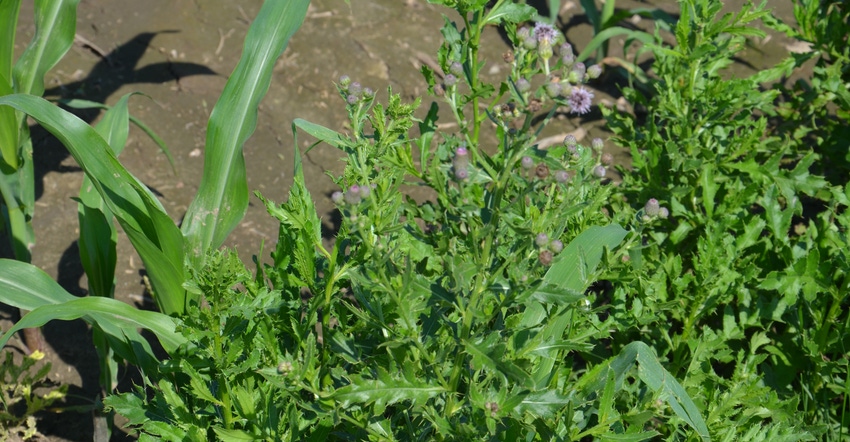January 31, 2019

Last year I saw several fields where weed control wasn’t effective, perhaps due to too much rain. Some resistant weeds survived and prospered throughout the season.
When new herbicides threatened the survival of certain weed species, Mother Nature stepped in to protect those species by changing their genetic mutations and making them resistant to the herbicides. This process is ongoing. Many weeds such as marestail and waterhemp have developed resistance to glyphosate herbicide because it was used on millions of acres of corn and soybeans. It was overused.
Lessons from glyphosate resistance are obvious. We shouldn’t become dependent on a single chemical to control weeds. And resistance isn’t limited to glyphosate. Many weeds are also now resistant to herbicides in other chemical families that have been widely used.
Early weed control matters
Here is why you need to control weeds in corn early and pay attention to situations that could lead to further herbicide resistance:
First, control weeds early so herbicide-resistant weeds can’t even get started.
Second, early weed control is very important to reduce light reflection from weeds. Corn plants are healthy and strong when they have plenty of space, but weak and spindly when they’re crowded. Plants appear to know quickly whether they have enough elbow room. But with young corn seedlings, leaves and roots aren’t long enough to touch other plants and “feel” that they don’t have elbow room. So how do they know they have too much company?
Research studies show light reflection is a signal. Light reflected from chlorophyll of neighboring plants signals to plants how close they are to each other.
“Windows” in leaves called stomata allow them to take in carbon dioxide from the air. They give off oxygen during the day. All green plants also have chloroplast cells that capture energy from sunlight to produce carbohydrates. Roots collect water, nitrogen and other nutrients. With these ingredients and oxygen, plants make sugars, and then starches and proteins. Eventually, these products are deposited in kernels.
It doesn’t matter if the nearby plants are weeds or other corn plants. Corn plants see them as too much competition and make decisions early that can reduce yield potential. If lots of weeds or other corn plants are too close, corn plants grow taller and are spindly, because they’re trying to beat other plants to sunlight.
If you wait to spray until plants get taller, you decrease yield potential. Corn plants already sensed competition from weeds and programmed themselves to produce smaller ears with fewer kernels. Some of these decisions will be made before you can spray, especially if spraying is delayed by rain.
So, create an environment for maximizing yields. First, plant at a high enough seeding rate so there isn’t wasted space, but don’t plant so many seeds to cause excessive competition between the corn plants themselves. And take care of weeds early.
Nanda is director of genetics for Seed Genetics-Direct, Jeffersonville, Ohio. Email [email protected] or call 317-910-9876.
About the Author(s)
You May Also Like






